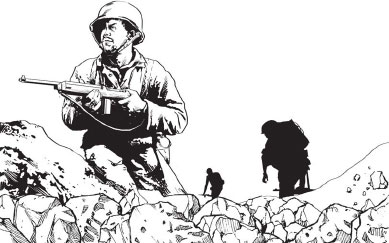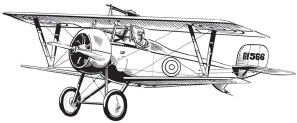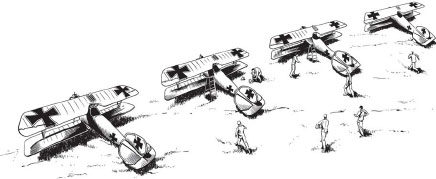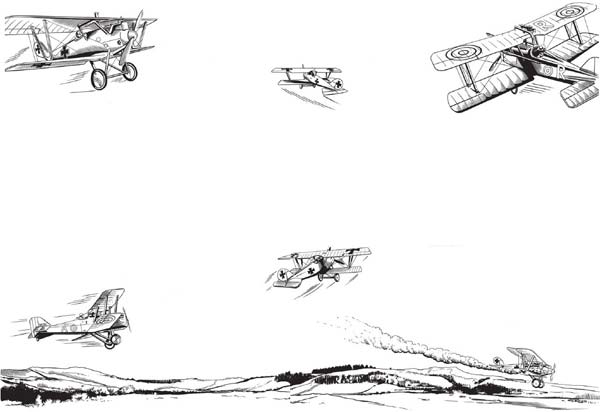The Dangerous Book of Heroes (36 page)
Read The Dangerous Book of Heroes Online
Authors: Conn Iggulden

Each battalion had its specific navy ship supporting it from the sea, laying down radio-directed artillery support as close as two hundred yards from them. Immediately behind the marines, Seabee bulldozers cleared new dirt roads to bring up tanks, more troops, supplies, and water, and to carry back the dead and wounded. The Pioneers also began clearing and repairing the southern airfield. By March 3, the Fifth Division had reached the third-northernmost airfield on the plateau and placed that under attack.
The battle for Iwo Jima was unique in that everywhere on the island, even in areas supposedly cleared of enemy soldiers, the marines and others were still exposed to Japanese pre-ranged artillery fire as well as surprise attacks. Kuribayashi's battle plan was for many of his soldiers to remain hidden underground as the advance passed over them, then to reappear,
behind
American lines.
For the marines this meant that any movement in front was probably the enemy but might be other marines advancing through the rocks. Movement behind them might be the enemy coming out from hiding to attack. It was nerve-racking. Both Japanese and marine casualties mounted alarmingly.
Everywhere, fighting continued throughout the night. Japanese soldiers used the darkness to infiltrate behind American positions and attack from the rear, so that the nights were lit by innumerable marine parachute flares and star shells. To conserve ammunition, the Japanese often attacked with bayonets and knives, the officers with their wickedly sharp samurai swords. There were also many head wounds from sniper fire. In those days helmets gave protection against glancing bullets and flying shrapnel, but a rifle bullet fired straight into a helmet often went through.
The first emergency landing on Iwo Jima was made on March 4. A B-29 bomber damaged during a raid over Japan and unable to reach the Mariana Islands landed on the southern airfield. It was serviced and refueled, then took off safely to return to Guam. By then, condensers to make water were operating ashore, and aviation fuel tanks had also been landed and filled. Two days later, the first Mustang fighter squadron arrived.
Slowly but steadily the advance continued northward across the rugged domed plateau. On March 8, despite Lieutenant General Kuribayashi's orders, around a thousand Japanese soldiers launched a counterattack against the Fourth Division. It was a suicide charge. Without artillery or tank support, 650 were killed when they were caught in the open by American field artillery and the attack failed.
By then, all the Japanese tanks had been knocked out and the defenders were running out of essential supplies. In their hot, steamy underground bunkers and caves the soldiers suffered from shortages of ammunition and water and were plagued by flies and cockroaches. They were forced to search the dead on the battlefield for water and to eat insects.
Very, very few surrendered, and the majority of those who did were severely wounded. They fought on, holding each position to the last man. Kuribayashi told them: “I want the surviving officers and men to attack the enemy until the last. You devoted yourself to the emperor. Do not think of yourself. I am always at the head of you all.”
Yet the marine advance was irresistible. It pushed the majority of the Japanese into a steadily decreasing perimeter in the northwest of the island, with isolated pockets fighting on elsewhere. Sometimes the Americans and Japanese fought in sea fog, at other times in rain with steam rising from the hot ground, but always there was the thick stench of sulfur.

Copyright © 2009 by Matt Haley
On March 14 Major General Schmidt was able to order the Fourth Division to commence reembarkation in the trans
port ships anchored offshore. At 1800 hours on the sixteenth, even while fighting continued, he declared Iwo Jima secured. Japanese High Command had promoted Kuribayashi to full general on the seventh. For them the battle was not over.
Of the Suribachi flag-raising group, only Privates Gagnon and Hayes remained uninjured. Bradley was wounded by mortar fire and evacuated with thousands of others, while Block, Sousley, and Strank were already dead. The first army garrison troops, the 147th Infantry, arrived in the south of the island on the twentieth.
Japanese resistance was considered destroyed on the twenty-fifth. Thirty-five days after the first marine landed on the southeastern beaches, firing sputtered to a halt when the last positions and caves on the northern coast were cleared. Only 216 Japanese had surrendered. Between 1400 and 1500 hours, Iwo Jima gradually fell silentâand the marines found that as disturbing as the battle. The sound of any movement seemed grossly magnified and dangerous in the eerie stillness.
However, this assessment of Japanese resistance was premature. There was one final, surprise, coordinated enemy attackâin the center of the island.
More than 260 soldiers, possibly led by Kuribayashi himself, had overnight slipped down the west coast to the central airfield. There, fighter pilots, Pioneers, and others were bivouacked in tents. At dawn on the twenty-sixth the Japanese charged the camp.
The battle lasted for three hours, the Japanese attacking with grenades, bayonets, and samurai swords. Forty-four airmen and nine Pioneers were killed, with 127 wounded, before the attack was driven off. The last Medal of Honor of Iwo Jima, awarded posthumously, was won there. Two hundred sixty-two Japanese were found dead.
The last marines left Iwo Jima the same day, but the infantry garrison was forced to patrol the island continuously throughout the remainder of March, April, and May. They fought and killed a further 1,602 enemy soldiers and captured 867, while yet more hid still in the tunnels and caves. The last two Japanese soldiers did
not surrender until 1949, more than four years after the end of the war.
Â
A total of 6,821 American servicemen were killed and 19,217 wounded in the battle for Iwo Jima. Of those killed, 5,885 were marines, as were 17,272 of those wounded. It was the corps' highest casualty count of all its battles. It was also the battle where twenty-nine Medals of Honor were awardedâseven to corpsmen and twenty-two to marinesâits highest medal count.
Of those medals, seven were posthumously awarded to marines throwing themselves onto enemy grenades to save their comrades. Such actions of self-sacrifice can only be instinctive, created by a strong esprit de corps. It was why Admiral Nimitz said of Iwo Jima, “Uncommon valor was a common virtue.”
Of the Japanese army, 1,083 were captured, and more than 20,000 killed. The exact number of dead is not known; thousands are sealed forever in their tunnels and caves. The body of General Tadamichi Kuribayashi has never been found.
Marines who survived the battle said that you could always identify an Iwo Jima veteran. It was by the scars and gouges on their elbows and knees, from crawling over the volcanic rock of the island.
The three survivors of the flag-raising photographâBradley, Gagnon, and Hayesâwere flown to the United States to tour the country to raise war bonds. It was a tremendous shock to them, to be fighting in a bitter battle one day and the next to be conducting public relations in a land at peace. They didn't enjoy it. In one city, Hayes, a Pima Native American from Arizona, was refused service because he was “an Indian.” It was all too much. He asked to be, and was, sent back to his unit in the Pacific.
Two memorials copying the Mount Suribachi photograph have been made. The first, a stone statue, stands in the Marine Corps headquarters at Quantico, Virginia. The corps is unique among U.S. Armed Forces because it was first formed before the United States of America itself was created. Derived from the Royal Marinesâthe very first Sea Service Regiment of 1664âthe U.S. Marine Corps was
raised on November 10, 1775, disbanded in 1783, and re-formed in 1798. The Suribachi statue was unveiled on the corps' 176th anniversary in 1951. Bradley, Gagnon, and Hayes were guests of honor.
The second and larger statue is of bronze. It was approved by Congress as a national memorial to all U.S. military forces and was paid for by public subscription. It is the statue at Arlington National Cemetery, Virginia, unveiled by President Eisenhower in 1954.
From the capture of Iwo Jima to the end of the war in August 1945, it has been calculated that B-29 bombers made 2,251 emergency landings on its airfields. In other words, about thirty thousand airmen were saved from death or injury through being able to land on Iwo Jima rather than crash into the sea. In addition, the dropping of hydrogen bombs on Hiroshima and Nagasaki that August saved the millions of Allied and Japanese lives that an invasion would have incurred.
Iwo Jima was handed back to Japan in 1968, and all over the island are still the ruins and remains of the battle. On the summit of Mount Suribachi are memorials to both the American and Japanese soldiers, the men who fought that epic thirty-six-day battle of 1945.
Recommended
The Ghosts of Iwo Jima
by Robert S. Burrell
Flags of Our Fathers
by James Bradley with Ron Powers
Film:
Iwo Jima: 36 Days of Hell
Arlington National Cemetery, Arlington, Virginia
The Courage of the Early Morning

Copyright © 2009 by Graeme Neil Reid
A
t 3:57
A.M
. on June 2, 1917, a lone Royal Flying Corps fighter took off from the Filescamp airfield near Arras in France. It was still dark, with that hollow predawn cold when the body is at its lowest ebb. The Canadian pilot had pulled his clothes on over the top of his pajamas to keep his bed warmth, drunk a cup of hot tea, and walked out to his Nieuport 17 and waiting mechanic. Soon he was across the front, high above the road to Cambrai.
In June the sun rises early and the first color spread across the World War I battlefields below. At his target airfield near Cambrai there was no activity, so pilot Billy Bishop searched for another target. Near Esnes, twelve miles behind enemy lines, he found an airfield with planes wheeled out for battle: a single two-seater reconnaissance plane and six gray-blue Albatross scoutsâenemy fighters. Bishop swooped low at two hundred feet through ground fire, spraying the aircraft below
from the Lewis machine gun on his top wing. He saw a mechanic fall.

Copyright © 2009 by Graeme Neil Reid
An Albatross started to take off, so he flew in behind and shot it down sixty feet above the ground, the machine disintegrating as it slid along the grass. Its pilot survived. A second Albatross began its takeoff. Bishop turned tightly, fired but missed. The German pilot swerved away into a tree, tearing off the airplane's right wing. By then, two more Albatrosses had taken off, and Bishop dueled with one while the second watched and waited. He maneuvered in tight turns until he was below the enemy and emptied his gun into the Albatross's engine. The plane fluttered away and crashed near the airfield.
Gripping the stick between his legs, Bishop stood in his cockpit and replaced the empty ammunition drum of the Lewis gun. The fourth Albatross flew in to attack, but Bishop turned the Nieuport head-on toward it and fired the full drum. The German fled and Bishop turned away for home.
Above him at two thousand feet he saw a dawn patrol of Albatrosses. He flew unseen directly below them until he reached the front-line trenches and dived for friendly territory. German pilots rarely pursued across the front, but the guns on the ground fired up at him. Bishop landed back at Filescamp, one hour and forty-three minutes after taking off. His Nieuport had been raked by machine-gun and antiaircraft fire along its lower wings, elevators, and fuselage. Mechanic Sergeant Nicod noted the damage in his report.
Bishop's commanding officer of 60 Squadron, Major Jack Scott, recommended him for the Victoria Cross, Bishop's second recommendation. It was gazetted in August to be Canada's first aerial Victoria Cross. General Trenchard, commanding officer of the RFC (soon after renamed the Royal Air Force), called it “the greatest single show of the war.”
Captain William Avery Bishop was already well known along the western front of Belgium and France. By June 1917 he had twenty-one confirmed “victories” against German flyers, making him an ace four times over. He was holder of the Military Cross. Yet in those
early years of aerial combat, success was a lottery, determined by the airplane itself as much as by the enemy. Bishop flew first in 21 Squadron, flying the experimental RE7 reconnaissance plane. It was known as “the Suicide Squadron.” “The RE7s are nearly as maneuverable as ten-ton trucks,” Bishop commented, “but by no means as safe.”
At that point, British ace Captain Albert Ball VC of 60 Squadron had the most victories of the 1914â18 war, with forty-four. A victory was given if “an enemy aircraft was seen going down out of control, in flames, to fall apart, driven down or forced to land.” It was different from the later battle of Britain, when an aircraft had to be destroyed to claim a “kill.”
Bishop learned his tactics from Ball. After Bishop downed his fifth enemy plane to become an official “ace,” he painted the front of his engine a bright blue so it would not be mistaken for Ball's red airplane. German flyers called Bishop “the Blue-Nosed Devil.” It was Ball who'd first suggested a surprise dawn attack on a German airfield, but he'd been shot down and killed that May. After Ball's death, Bishop was determined to exceed his total.
He was more a lone hunter than one of a team, although he commanded C Flight at Filescamp. With their rare level of skill, Ball and Bishop were two of the very few pilots allowed to hunt alone. Bishop similarly sought the advantage of height, of surprise, of attacking out of the sun and hunting deep behind enemy lines. He was a superb shot, thanks to growing up game shooting in Canada. He had excellent eye
sight and possessed that three-dimensional awareness of airspace vital for a successful fighter pilot. He also made many more flights than most pilots, for he flew both squadron patrols
and
alone. It increased his chances of victories. It also increased his chances of being someone else's “victory,” but that's war.

Copyright © 2009 by Graeme Neil Reid
April 1917 was known as “Bloody April” in the RFCâthe average life span for a pilot was forty-five days, and in Bishop's sector only seventeen days. Flying was increased to support the battle of Arras below, in which the Canadian Corps captured Vimy Ridge. Bishop's squadron suffered particularly badly, for they were opposite the red-painted “Flying Circus” of Baron Manfred von Richthofen, the most successful squadron of the war. Richthofen claimed eighty victories before he was killed in April 1918. Bishop battled with the Circus and, some claim, with Richthofen himself on April 30, although that is doubtful.
During Bloody April, thirteen of the eighteen pilots in 60 Squadron were shot down as well as seven replacement pilotsâa 110 percent casualty rate. Yet thirty-five of the enemy were also shot down, twelve of those by Billy Bishop, so April wasn't exactly a honeymoon for German flyers either. It was that May that Major Scott first recommended Bishop for a Victoria Cross, for “prolonged gallantry.” He was awarded the Distinguished Service Order instead.
In July the squadron's out-of-date Nieuports were replaced by the excellent SE-5 fighter and
Bishop shot down even more enemy airplanesâtwo-seater fighters, reconnaissance, single-seat fighters, even German observation balloonsâuntil on the twenty-eighth his SE-5 was hit by the slashing shrapnel of antiaircraft fire. He was still two miles from Filescamp airfield when the spluttering engine caught fire and Bishop crashed into a stand of poplar trees. Wire snapped, wooden struts splintered, canvas wings tore, and Bishop was left hanging upside down in his harness. He passed out. Rain put out the fire, and he was rescued by passing soldiers. Understandably, he was shaken. He wrote home: “I find myself shuddering at chances I didn't think about taking six weeks ago.”
Nonetheless, by the time he was given extended leave on September 1, he'd overtaken Ball's total, with fifty victories. He took a steamer to Canada and married his sweetheart, Margaret Burden. Thousands lined the Toronto streets to see Canada's air hero and his bride.
Â
When the United States entered the war in April 1917, Captain Bishop, VC, MC, DSO and bar, was posted to the British War Mission to help America build an air force. While in America, he wrote a quick autobiography,
Winged Warfare,
which more than anything was propaganda for recruiting drives. The truth was embellished and the preface baldly stated that the book would provide “inspiration to every young man in the army âwings' or who contemplates an army career.” Bishop said later: “It turns my stomach.”
It wasn't until March 1918 that Bishop was posted back to Britain. He was immediately promoted to major and given command of the new RAF's 85 Squadron at Hounslow, near Heathrow. He was given a relatively free hand in the selection of pilots, and more than two hundred volunteered to join him. There were Australians, British, Canadians, South Africans, New Zealanders, and even the first Americans. In May, flying SE-5a scouts, one of the best airplanes of the entire war, the squadron flew to Petite-Synthe near Dunkirk for operations over Flanders. They were known as “the Flying Foxes.”
On May 27 Bishop shot down a two-seater over Passchendaele and on the twenty-eighth two Albatross fighters over Ypres. His
phenomenalâand deadlyâmarksmanship continued until June 17, when his squadron was operating from Saint-Omer. He was advised that he'd been posted to Britain to help create a Canadian flying corps, and he had to leave his squadron by noon of the nineteenth. “I've never been so furious in my life,” he wrote to his wife. “It makes me livid with rage to be pulled away just as things are getting started.”
However, the Canadian government was worried about him. With the best airplanes and better tactics, the RAF commanded the air over the battlefronts, yet it was feared that, like his mentor Albert Ball, Bishop would be killed. He was more important to the war effort alive than with a few more victories and dead.
On the morning of the nineteenth Billy Bishop flew his last patrol. “One last look at the war,” he described it. He intercepted a flight of German Pfalz fighters and in a ferocious fifteen minutes of flying was credited with three more victories, although he claimed five.
In August he was awarded the RAF's new Distinguished Flying Cross in recognition of his recent twenty-five victories in just twelve days of combat. Two days later he was promoted to lieutenant colonel and appointed “Officer Commanding-designate of the Canadian Air Force.” In all, he was credited with seventy-two airplane victories and two observation balloons, making him the greatest ace of the RAF and one of the few great aces to survive the war.
Billy and Margaret Bishop's postwar years were up and down. They moved to England in 1921, had three children, and ran a successful business until bankrupted by the stock-market crash of 1929. Returning to Canada, Bishop was appointed honorary group captain in the Royal Canadian Air Force and, eventually, honorary air marshal.
During World War II, Air Marshal Bishop helped expand the Royal Canadian Air Force. He was also instrumental in creating the Commonwealth Air Training Plan, in which thousands of flyers from the commonwealth and empire were trained in the peaceful airspaces of Canada. He had the pleasure of presenting his own son, Arthur, with his pilot's wings. Arthur Bishop flew Spitfires during the battle of Britain to become one of “the Few,” and one of the few of “the Few” to survive that war.
In 1942, after the United States entered the war, Billy Bishop appeared in a Hollywood propaganda film,
Captains of the Clouds,
and so became one of the rare actors actually to play himself. More important, King George VI made Bishop a Companion of the Order of the Bath in the Birthday Honours List of 1944, while at home he was awarded the Canadian Efficiency Decoration. After the war, he wrote another book,
Winged Peace.
That book and Bishop himself helped the formation of the International Civil Aviation Organization. Bishop retired in 1952 at the age of fifty-eight, to die in his sleep in September 1956.
Â
Billy Bishop's honor seemed safe. He'd played his part in two world wars, defeating, respectively, militarism and fascism. Many books were written about him, including one by his son, and there is even a play,
Billy Bishop Goes to War.
Yet it seems nothing is sacred. In 1982 a “documentary” film was released by the National Film Board of Canada called
The Kid Who Couldn't Miss.
It caused controversy throughout Canada and led to a senate inquiry.
